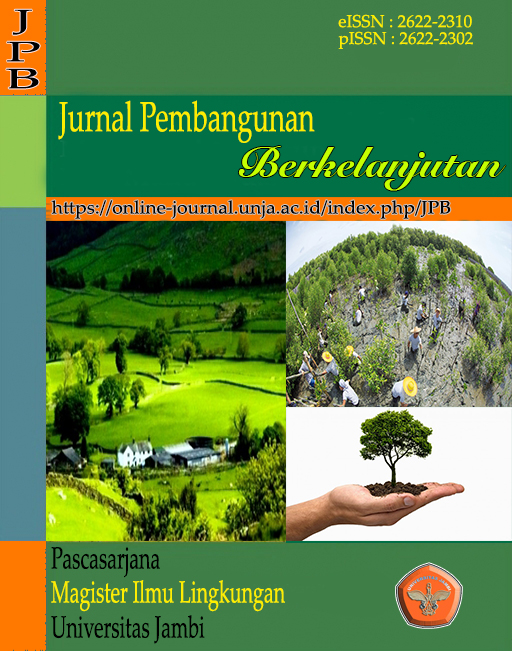Impact Of Agroforestry On Hydrological Functions In The Batang Merao Hulu (Micro Watershed) Bremas District, Jambi Province
DOI:
https://doi.org/10.22437/jpb.v5i1.18629Keywords:
Agroforestry, land, watershed, SWAT ModelAbstract
Land as a limited natural resource can suffer damage and decrease productivity if it is not managed wisely. Land use of anarea affects the hydrology of the area, changing land use means changing the type and proportion of land cover which in turn affects its hydrological response. Incompatibility of land use can have an impact on decreasing land quality, so that it often resultsin floods, droughts, erosion which will reduce land productivity and community welfare. The equipment used in this researchare: (1) Computer with ArcGIS¬ 10.4 software, ArcSWAT version 2012.1_8 Microsoft Office 2013, SWAT Plot for calculating R2and NS values; (2) Global Positioning System (GPS); (3) Digital camera, stationery and external hard disk to store data.Planting with agroforestry patterns and the application of conservation techniques in the Batang Merao Hulu sub-watershedhave an effect on hydrological characteristics, this is indicated by the reduced runoff coefficient value before plantingagrofrestry with the application of conservation techniques from 0.4 to 0.09 and the flow regime coefficient from 48.49 m3/s to 17.18 m3/s. The best land management scenario is to carry out planting with agroforestry patterns and the application of conservation techniques in the form of mound terraces. This agroforestry pattern not only emphasizes the types of woodyplants and MPTs but also prioritizes local local plants which are the prima donna of the people of Kerinci Regency, namelycoffee and cinnamon, so that ecologically, the hydrological function of the watershed is maintained.
Downloads
Downloads
Published
How to Cite
Issue
Section
License
Copyright (c) 2022 Jurnal Pembangunan Berkelanjutan

This work is licensed under a Creative Commons Attribution 4.0 International License.
1. Authors retain copyright and grant the journal right of first publication with the work simultaneously licensed under a Creative Commons Attribution 4.0 International License that allows others to share the work with an acknowledgement of the work's authorship and initial publication in this journal.
2. Authors are able to enter into separate, additional contractual arrangements for the non-exclusive distribution of the journal's published version of the work (e.g., post it to an institutional repository or publish it in a book), with an acknowledgement of its initial publication in this journal.
3. Authors are permitted and encouraged to post their work online (e.g., in institutional repositories or on their website) prior to and during the submission process, as it can lead to productive exchanges, as well as earlier and greater citation of published work (The Effect of Open Access)











